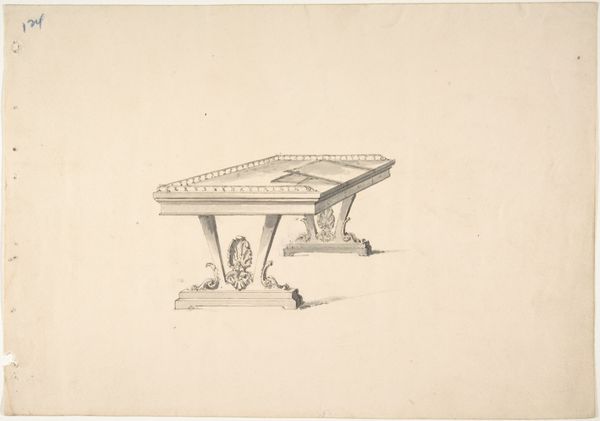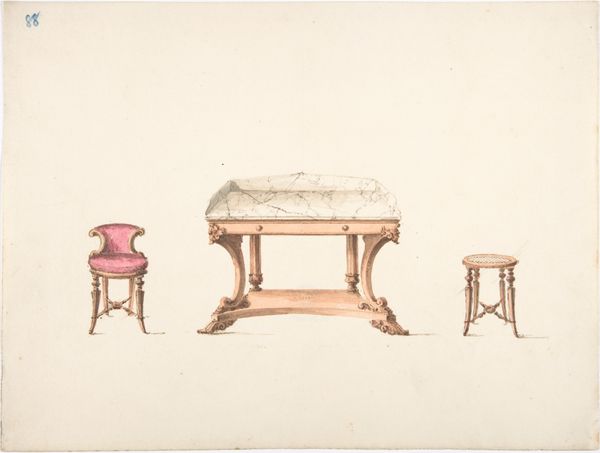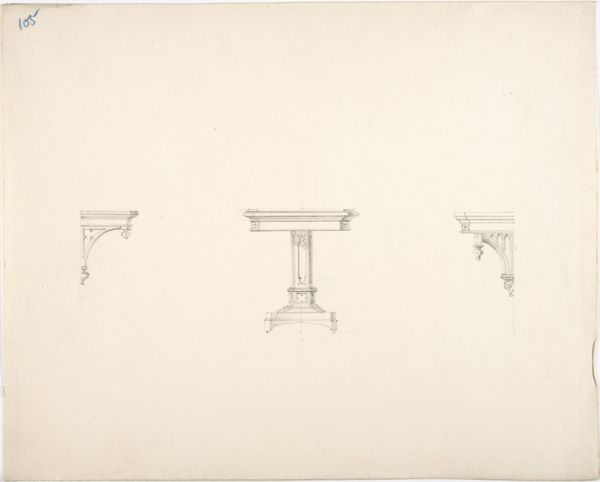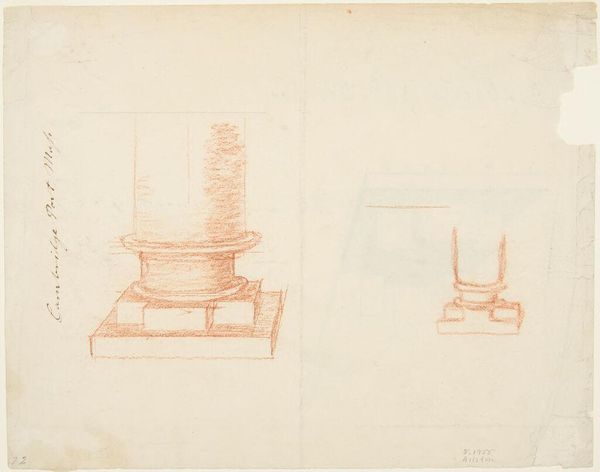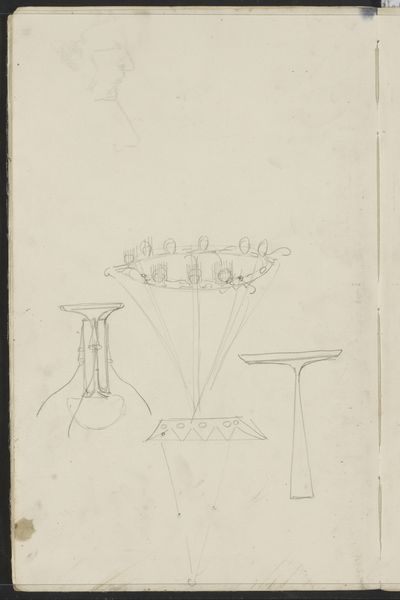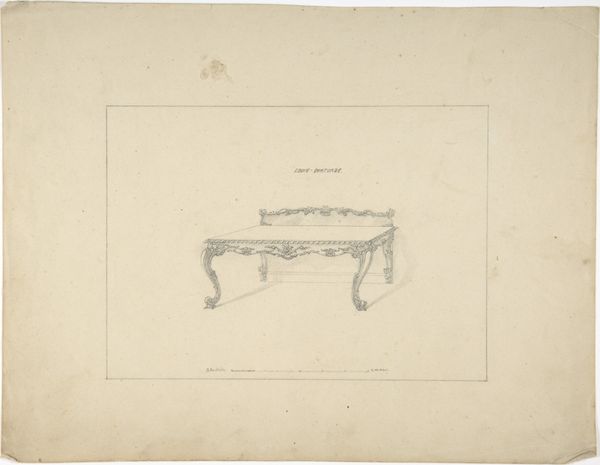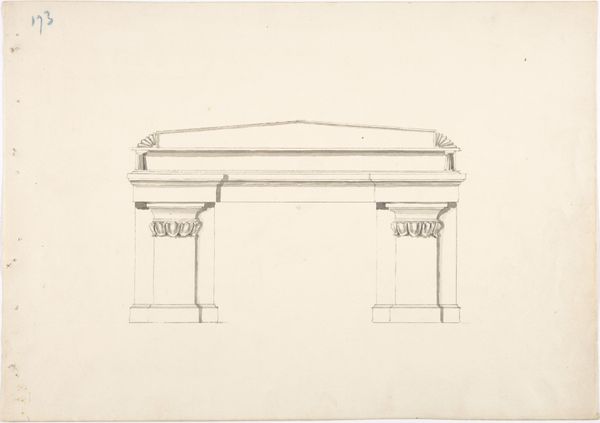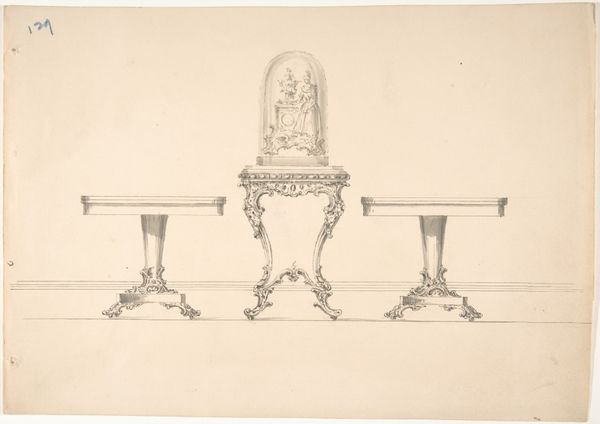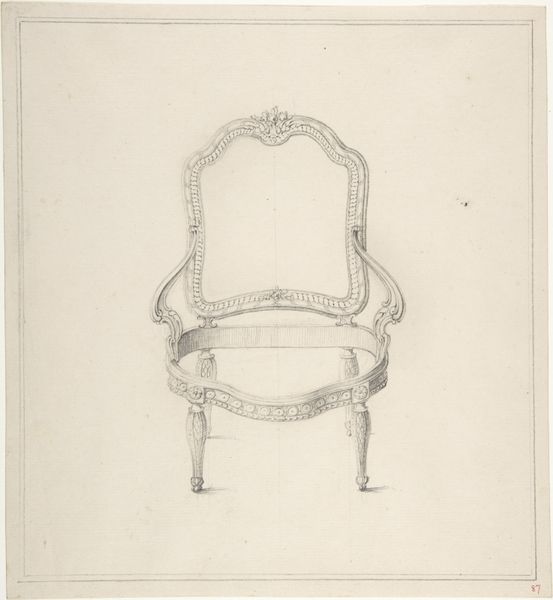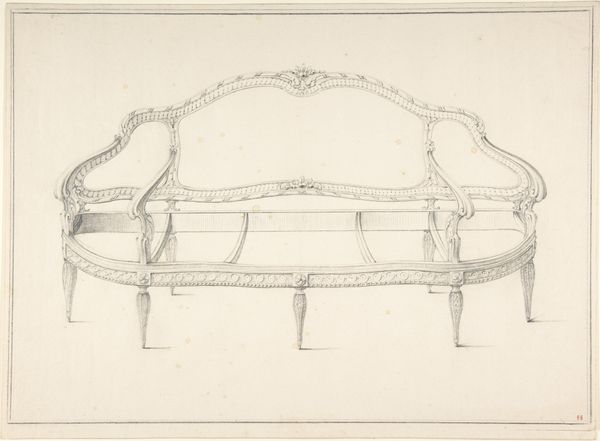
drawing, print, paper, pencil
#
drawing
#
neoclacissism
# print
#
pencil sketch
#
etching
#
paper
#
form
#
pencil
#
line
Dimensions: sheet: 8 11/16 x 12 5/16 in. (22 x 31.2 cm)
Copyright: Public Domain
Curator: This drawing, simply titled "Design for a Curved and Bottle Coaster," was created anonymously sometime between 1800 and 1850. It’s rendered in pencil and etching on paper. Editor: It feels very tentative, doesn’t it? Like a fleeting thought captured quickly. I’m immediately drawn to the elegant, almost spindly legs of the table—or coaster, as they call it. There’s a fragility to the whole design. Curator: Precisely. Notice the contrast in how the top surface of the coaster is depicted twice, once from an elevation, showcasing its contours and suggesting its actual placement in space, and then flattened from above with delicate lines implying materials, perhaps inlaid wood. It suggests a preoccupation with functionality but within a clear Neoclassical framework, think about the consumption practices of that era! Editor: Ah, a visual dance between practicality and aspiration! Were bottle coasters like these a common feature in affluent homes? How might they reflect social rituals of the time? Was it commonplace that this level of detailed design was invested into something we now see as quite functional? Curator: Indeed. It is likely commissioned, part of the broader phenomenon of specialized furnishings designed for the rituals of serving and consuming beverages within a specific socio-economic class. It's quite interesting, given that design drawings like this blur the lines between 'art' and what we might call industrial production today. Someone conceived of this, detailed it, possibly showed it to a client, before any coaster existed in tangible form. Editor: So this object reflects both the materiality of elite domestic life and the very specific labor practices related to producing and designing. Looking closer, you can see the repetition in lines—they give it depth but also speak to the labor involved in their creation. I wonder who the draughtsman was. Were they trained as an artist, artisan, or something in between? What was the level of technical skill needed? Curator: The anonymity complicates this analysis but speaks further to labor hierarchies in artistic production at that time! It challenges the emphasis placed on singular authorship... It's intriguing how this one design prompts us to think about social histories in museums! Editor: Absolutely! Seeing this preliminary sketch transforms the way we think about luxury objects and even design authorship! Curator: It provides us with this small glimpse of artistry that often goes unmentioned in history books!
Comments
No comments
Be the first to comment and join the conversation on the ultimate creative platform.

